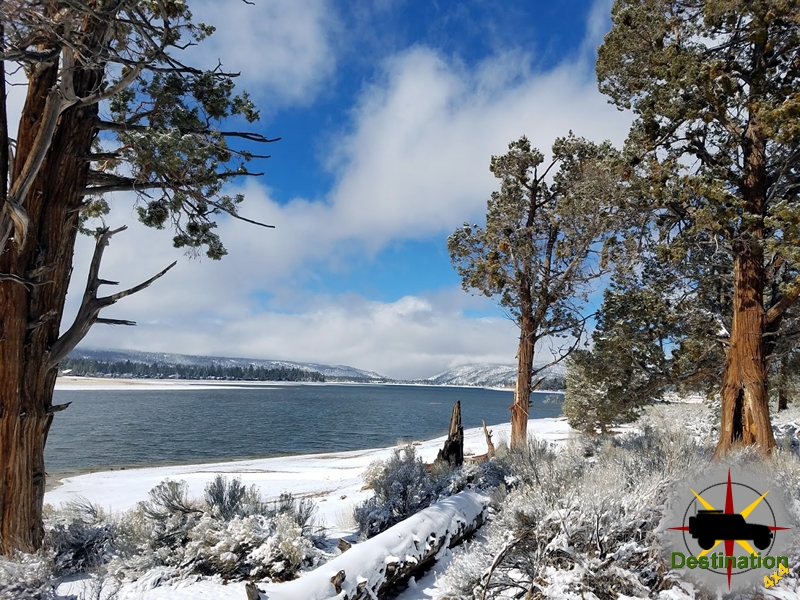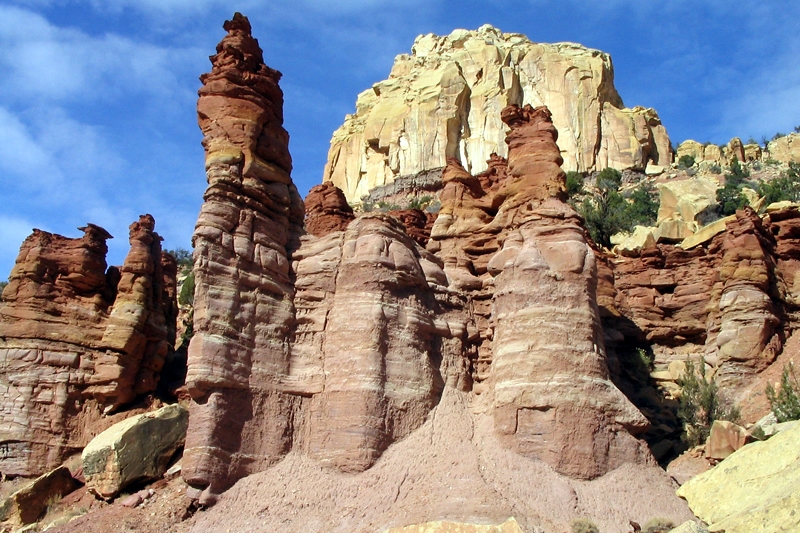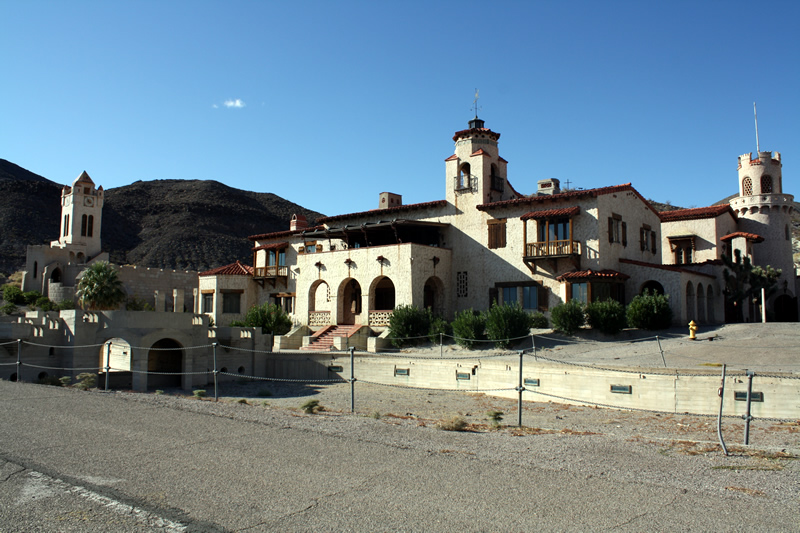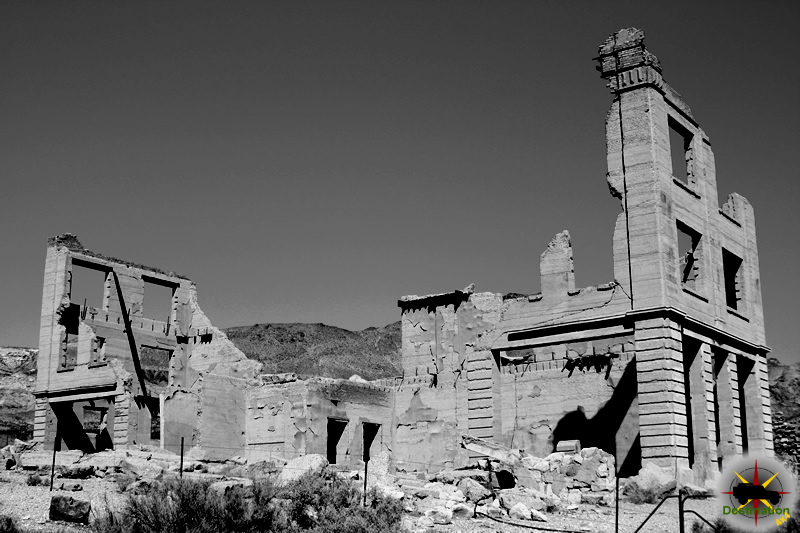
Field Guide to the Birds of North America

The “Field Guide to the Birds of North America” was first introduced to me by my brother, who is a Field Biologist for San Bernardino County. At the time, the two of us were camping along the 395 Highway on the Eastern Sierra, He brought his copy in the hopes of seeing some new bird species. After a few days of camping, we stopped at the visitors center at Mono Lake where I purchased by copy. Since then, this book is taken on every trip I take out of the city.
My copy of the third edition features over 800 species of birds all organized by family. The description for each bird contains an illustration by sex, descriptions and distribution map along with many variations and subspecies.
The 7th edition currently contains a total of 1,023 species, which is roughly 20% more than my much older copy. The latest version contains revisions in taxonomy revised to reflect the radical new American Ornithological Society taxonomy established in 2016. The update of taxonomy is the reason for the additions, so at some point I will break down to purchase the new version.
Whenever I go on a trip, I pull out the maps that I will need to explore the area. I also look for a bird watching checklist which typically contain a list of bird known to be in the area. These lists will make it dramatically easier narrow down birds you are looking for, and help in your identification.
Bird Watching
People engage in birdwatching for a multitude of reasons, each deeply personal and rewarding I personally enjoy listening to the birds while camping:
- Appreciation of Nature: Birdwatching allows people to connect with the natural world, fostering a deeper appreciation for the beauty and diversity of birds and their habitats.
- Relaxation and Stress Relief: Spending time in nature has been shown to reduce stress and promote relaxation. Birdwatching provides an opportunity to escape the hustle and bustle of daily life and immerse oneself in the peacefulness of natural surroundings.
- Physical Activity: Birdwatching often involves walking or hiking, providing a gentle form of exercise that can improve cardiovascular health and overall well-being.
- Mental Stimulation: Identifying birds and learning about their behaviors, habitats, and calls can be mentally stimulating and intellectually rewarding.
- Community and Social Connection: Birdwatching can be a social activity, providing opportunities to connect with like-minded individuals who share a passion for birds and the environment.
- Conservation Awareness: Birdwatching can foster a sense of environmental stewardship by raising awareness about the importance of preserving habitats and protecting bird species and their ecosystems.
- Adventure and Exploration: Birdwatching often takes enthusiasts to new and exciting locations, encouraging exploration and a sense of adventure.
- Photography and Artistic Expression: Many birdwatchers enjoy capturing images of birds through photography or expressing their observations through various forms of artistic expression, such as drawing or painting.
Overall, birdwatching offers a myriad of benefits that cater to both physical and mental well-being while fostering a deeper connection to the natural world.
Book Summary
| Name | Field Guide to the Birds of North America |
| Author | Jonathon Alderfer |
| Publisher | National Geographic |
| Edition | 7th Edition |
| Pages | 592 Pages |
Resources
Cerro Gordo (Images of America)

High in the Inyo Mountains, between Owens Valley and Death Valley National Park, lies the ghost town of Cerro Gordo. Discovered in 1865, this silver town boomed to a population of 3,000 people in the hands of savvy entrepreneurs during the 1870s. As the silver played out and the town faded, a few hung on to the dream. By the early 1900s, Louis D. Gordon wandered up the Yellow Grade Road where freight wagons once traversed with silver and supplies and took a closer look at the zinc ore that had been tossed aside by early miners. The Fat Hill lived again, primarily as a small company town. By the last quarter of the 20th century, Jody Stewart and Mike Patterson found themselves owners of the rough and tumble camp that helped Los Angeles turn into a thriving metropolis because of silver and commercial trade. Cerro Gordo found new life, second to Bodie, as California’s best-preserved ghost town.
About the Author
Roger W. Vargo and Cecile Page Vargo are a husband-wife historian team who photograph, write about, and guide tours to historic areas. They have volunteered and worked in both Bodie and Cerro Gordo. Histories and images have been collected from public, personal, and private archives.
Book Summary
| Title | Cerro Gordo (Images of America) |
| Author | Cecile Page Vargo, Roger W. Vargo |
| Publisher | Arcadia Publishing |
| Pages | 130 Pages |
Osceola Nevada – Nevada State Historic Marker 98
Osceola, Nevada, located in White Pine County near Great Basin National Park, was the state’s most significant and longest-lived gold placer mining camp. Established in 1872 after the discovery of a vast gold-bearing quartz belt, Osceola thrived as a bustling mining town in the 1880s, driven by innovative hydraulic mining techniques and an extensive water delivery system. This report chronicles Osceola’s history, from its founding to its decline and current status as a ghost town, drawing on historical records, state markers, and primary sources.
Founding and Early Development (1872–1877)
In 1872, prospectors James Matteson and Frank Heck discovered a gold-bearing quartz belt 12 miles long and 7 miles wide, three miles west of what is now Great Basin National Park. The Osceola Mining District was formally established in October 1872, named after the Seminole chief Osceola. Initial mining efforts were limited by a lack of water, with miners using simple “49” rockers to process placer gold found in Dry Gulch in 1877 by John Versan. By 1874, the camp had grown to 250 residents, and a five-stamp mill was built in 1878 to replace primitive arrastras, marking the town’s early growth.
Boom Period and Hydraulic Mining (1878–1890)
Osceola’s major boom began in the 1880s with the introduction of hydraulic mining, a technique using high-pressure water jets to extract gold from gravel beds 10 to 200 feet thick. To address the region’s water scarcity, the Osceola Gravel Mining Company constructed two extensive ditch systems. The West Ditch, built from 1884 to 1885, spanned 16 miles, drawing water from six creeks on the west side of the Snake Range. However, it proved inadequate, with mines operating only two hours daily due to water shortages, as reported by the White Pine News on September 12, 1885.
In 1889, construction began on the Osceola East Ditch, an 18-mile canal from Lehman Creek and its tributaries, completed on July 4, 1890, at a cost of $108,223 (approximately $3.5 million in 2025 dollars). This ambitious project, involving 300 laborers, including Chinese and Western Shoshone and Southern Paiute workers, featured a 600-foot tunnel, wooden flumes, and a rock dam at Stella Lake. By 1891, both ditches enabled 24-hour mining operations, boosting production. A notable find in 1886—a 24-pound gold nugget valued at $6,000 (about $190,000 in 2025)—further fueled the boom.
At its peak in the mid-1880s, Osceola had a population of approximately 1,500, supported by two stores, a hotel, a restaurant, a school, a brewery, saloons, and professional services. It was among the first Nevada towns with electric lights and the first in White Pine County with a telephone. The town’s strategic location near Spring and Snake Valleys’ cattle, grain, and garden resources made it a regional business hub. Key mines included the Cumberland, Osceola, Crescent and Eagle, Verde, Stem-Winder, Gilded Age, Grandfather Snide, Red Monster, and Saturday Night.
Decline (1890–1900)
Osceola’s prosperity waned by 1890 due to multiple challenges. A major fire that year destroyed much of Main Street, accelerating the town’s decline. The East Ditch, despite its scale, underperformed due to leaky flumes, water theft, and insufficient snowmelt, limiting hydraulic mining to three or four months annually. Production in 1890 was $16,191, and in 1891, $20,223—far below expectations. Water shortages from mild winters and legal disputes over water rights further hampered operations. By 1900, the Osceola Placer Mining Company ceased operations, and the population dwindled to 100, insufficient to maintain a post office. Hydraulic mining ended in 1900, and the ditches were abandoned.
Revivals and Final Decline (1906–1950s)
A 1906 proposal by the Nevada Amalgamated Mines and Power Company to build reduction works, a power plant, and a railroad spur failed to materialize. Mining resumed sporadically from 1925 to 1932, when the Nicholson Mining & Milling Company operated an 80-ton mill with a 3,500-foot water pipeline, and again from 1936 to 1942 during World War II. Over its lifetime, Osceola produced nearly $5 million in gold (approximately $150 million in 2025 dollars), with minor amounts of silver, lead, and tungsten. A devastating fire in the 1940s destroyed most remaining structures, and by the 1950s, the last residents departed, leaving Osceola a ghost town.
Connection to Nevada Northern Railway
While Osceola’s peak predated the Nevada Northern Railway’s completion in 1906, the railway, connecting Ely to national rail networks, likely supported later mining revivals by facilitating ore transport. The railway’s Ore Line, serving nearby Ruth and McGill, underscores its role in White Pine County’s mining economy, though Osceola’s remote location limited direct rail access. (from prior conversation)
Present Day
Today, Osceola is a ghost town at 7,500 feet on the western slopes of Mt. Wheeler, accessible via a gravel road off U.S. Highways 6 and 50, 34 miles east of Ely. The cemetery, overlooking Spring Valley, and a few scattered buildings remain, alongside remnants of the East Ditch, listed on the National Register of Historic Places in 1996. The West Ditch is largely deteriorated, and the East Ditch, though overgrown, retains sections of flume and a partially collapsed tunnel at Strawberry Creek. Small-scale mining continues, with 217 active and 1,872 closed claims in the Osceola Mining District. One resident reportedly remains, and visitors are urged to respect private property. The site is a photographic attraction near Great Basin National Park, with the cemetery being the most notable feature.
Conclusion
Osceola, Nevada, exemplifies the transient nature of mining boomtowns. Its innovative use of hydraulic mining and the ambitious Osceola Ditch system highlight the ingenuity and challenges of placer mining in an arid region. Despite producing nearly $5 million in gold, fires, water shortages, and declining ore yields led to its demise. Today, Osceola’s sparse remnants and historical significance, preserved by Nevada State Historical Marker No. 98 and the East Ditch’s National Register listing, offer a glimpse into Nevada’s mining heritage, making it a compelling destination for historians and visitors to Great Basin National Park.
Nevada State Historic Marker 98
Nevada State Historical Markers identify significant places of interest in Nevada’s history. The Nevada State Legislature started the program in 1967 to bring the state’s heritage to the public’s attention with on-site markers. These roadside markers bring attention to the places, people, and events that make up Nevada’s heritage. They are as diverse as the counties they are located within and range from the typical mining boom and bust town to the largest and most accessible petroglyph sites in Northern Nevada Budget cuts to the program caused the program to become dormant in 2009. Many of the markers are lost or damaged.
Most of the markers across the state are large blue metal markers. However, there are a variety of other marker styles out there. For this guide they have been simplified into a few categories (blue, blue small, concrete, and stone). Sometimes, the markers are on buildings, fences, or metal stands.
Osceola 1872-1940
Osceola, most famous of the White Pine County gold producers, was one of the longest-lived placer camps in Nevada.
The gold-bearing quartz belt found in 1872 was 12 miles long by 7 miles wide. Placer gold was found in 1877 in a deep ravine indenting the area. Miners first used the simple process of the common 49” rocker. Hydraulic monitors later were used to mine the gold from the 10’ to 200’ thick gravel beds. One gold nugget found was valued at $6,000.
Osceola was a good business town because of its location near the cattle and grain ranches and gardens in the Spring and Snake Valleys.
Famous district mines were the Cumberland, Osceola, Crescent and Eagle, Verde, Stem-Winder, Guilded Age, Grandfather Snide, Red Monster, and the Saturday Night.
The camp produced nearly $5 million, primarily in gold, with some silver, lead, and tungsten.
STATE HISTORICAL MARKER NO. 98
STATE HISTORIC PRESERVATION OFFICE
WHITE PINE PUBLIC MUSEUM, INC.
Nevada State Historic Marker 98
Nevada State Historic Marker Summary
| Name | Osceola |
| Location | White Pine County, Nevada |
| Latitude, Longitude | 39.0711, -114.4500 |
| Nevada State Historic Marker | 98 |
References
- Nevada State Historical Marker No. 98, Nevada State Park System.
- Nevada Ghost Towns & Mining Camps by Stanley W. Paher (Nevada Publications, 1970).
- National Park Service, Osceola Ditch, Great Basin National Park.
- Roadside History of Nevada by Richard Moreno.
- Osceola Mining District, White Pine County photographs and document, University of Nevada, Reno, Special Collections Department.
The Humboldt River
The Humboldt River, Nevada’s longest river, stretches approximately 330 miles from its headwaters in the Ruby, Jarbidge, and Independence Mountains in northeastern Nevada to its terminus in the Humboldt Sink, a dry lakebed in the Great Basin. For centuries before European contact, the river was a vital lifeline for Indigenous peoples, including the Northern Paiute, Western Shoshone, and Bannock tribes. These groups relied on the river for water, fishing, and supporting vegetation in an otherwise arid region. Archaeological evidence suggests human habitation along the river dating back thousands of years, with the river serving as a critical resource for survival in the Great Basin’s harsh environment.

Exploration and Naming (1820s–1830s)
The Humboldt River first came to the attention of European-American explorers during the early 19th century. In 1828–1829, British fur trader Peter Skene Ogden, working for the Hudson’s Bay Company, explored parts of the river during his expeditions in the Great Basin. However, it was American explorer John C. Frémont who named the river in 1845 during his mapping expeditions, honoring German naturalist Alexander von Humboldt, though Humboldt himself never visited the region. Frémont’s surveys highlighted the river’s role as a natural corridor through Nevada’s desert landscape, guiding early explorers and trappers.
Role in Westward Migration (1840s–1860s)
The Humboldt River became a cornerstone of westward expansion during the mid-19th century, serving as a primary route for the California Trail. From the 1840s through the 1860s, tens of thousands of emigrants, including those bound for the California Gold Rush, followed the river’s course across Nevada. The river provided essential water and forage for livestock, though its alkaline waters and unpredictable flow—ranging from floods in spring to near-dry conditions in late summer—posed challenges. Emigrant diaries frequently describe the Humboldt as both a salvation and a hardship, with its marshy sink offering little relief at the journey’s end. The river’s path also influenced the placement of trading posts and early settlements, such as Elko, Winnemucca, and Lovelock.
Mining and Economic Development (1860s–1900s)
The discovery of silver and gold in Nevada during the 1860s, particularly the Comstock Lode and other regional deposits, elevated the Humboldt River’s importance. The river supported mining operations by providing water for mills and irrigation for agriculture to feed growing mining communities. Efforts like the Humboldt Canal (1863–1870s), an ambitious but ultimately unsuccessful project to divert river water for mining and irrigation, underscored the river’s economic potential. The arrival of the transcontinental railroad in 1869, which closely followed the river’s route, further cemented its role as a transportation and economic corridor, with towns like Winnemucca emerging as key hubs.
20th Century to Present
In the 20th century, the Humboldt River continued to shape Nevada’s development, particularly through irrigation projects that supported alfalfa, hay, and cattle ranching in the river’s basin. Dams, such as the Rye Patch Reservoir (completed in 1936), were constructed to manage the river’s variable flow and provide water for agriculture. The river’s ecological and cultural significance persists, though it faces challenges from over-allocation, groundwater pumping, and climate change, which have reduced flows and impacted the Humboldt Sink’s wetlands. The river remains central to debates over water rights in Nevada, reflecting its enduring role in the state’s history.
Legacy
The Humboldt River is often called the “lifeblood of northern Nevada,” guiding human activity from Indigenous times through the present. Its path, paralleled today by Interstate 80, remains a defining feature of Nevada’s geography and history. The river’s story encapsulates the challenges of harnessing water in the arid West, shaping exploration, migration, and economic growth while serving as a reminder of the delicate balance between human ambition and environmental limits.
Nevada State Historic Marker 22
Nevada State Historical Markers identify significant places of interest in Nevada’s history. The Nevada State Legislature started the program in 1967 to bring the state’s heritage to the public’s attention with on-site markers. These roadside markers bring attention to the places, people, and events that make up Nevada’s heritage. They are as diverse as the counties they are located within and range from the typical mining boom and bust town to the largest and most accessible petroglyph sites in Northern Nevada Budget cuts to the program caused the program to become dormant in 2009. Many of the markers are lost or damaged.
The Humboldt River
Peter Skene Ogden encountered the Humboldt River on November 9, 1828 during his fifth Snake Country expedition. Entering Nevada near present-day Denio, Ogden came southward along the Quinn River and the little Humboldt River. Emerging on the Humboldt main stem near this site, Ogden explored hundreds of square miles of the Humboldt’s course, left records of his trailblazing in his journal, and drafted the first map of the area.
Ogden gave the name “Unknown River” to the Humboldt at this time, as he was unsure where it went. After the death of his trapper Joseph Paul, Ogden renamed the stream Paul’s River, then Swampy River, and finally Mary’s River, after the Native American wife of one of his trappers. In 1833, the Bonneville-Walker fur party named it Barren River.
Ogden’s or Mary’s River were commonly used names for the Humboldt prior to the 1848 publication of a map of John C. Frémont.
The Humboldt was the only natural arterial across the Great Basin. It funneled thousands of emigrants along its valley enroute to the Pacific Coast during the period 1841-1870.
HISTORICAL MARKER NO. 22
STATE HISTORIC PRESERVATION OFFICE
NORTHEASTERN NEVADA MUSEUM COMMITTEE
Nevada State Historic Marker 22 Summary
| Name | The Humboldt River |
| Location | Humboldt County, Nevada |
| Latitude, Longitude | 41.0159, -117.5731 |
| Nevada State Historic Marker | 22 |
Nevada State Historic Marker 22 Map
Robert Findley McLaury

Robert Findley McLaury, known as Frank McLaury (1857–1881) was a notable figure in the American Old West, primarily remembered for his involvement in the infamous Gunfight at the O.K. Corral in Tombstone, Arizona. Born in 1857 in the town of Belton, Texas, McLaury, whose birth name was Frank McLowery, was the youngest of four siblings. His family moved to Arizona Territory in the early 1870s, seeking new opportunities.
In Tombstone, Frank, along with his brothers Tom and an associate, Ike Clanton, became known for their involvement in various outlaw activities. The McLaury brothers were cattle ranchers and occasionally engaged in rustling, which contributed to their controversial reputation.
The most notable event in Frank McLaury’s life was the Gunfight at the O.K. Corral, which occurred on October 26, 1881. This 30-second shootout between the Earp brothers (Wyatt, Virgil, and Morgan) and their ally Doc Holliday against the Clanton-McLaury faction is one of the most famous confrontations in Western history. The clash was fueled by longstanding tensions between the two groups, primarily over control of the town and its surrounding cattle interests.
During the gunfight, Frank McLaury, who was armed and prepared for confrontation, was killed alongside his brother Tom McLaury. Frank’s death, along with the broader context of the Gunfight at the O.K. Corral, played a significant role in shaping the legendary status of Tombstone and its associated figures.
Frank McLaury’s legacy is largely defined by this dramatic episode in Western history, contributing to the enduring mythology of the American frontier. His life and death continue to be subjects of fascination and speculation in both historical accounts and popular culture.
References




